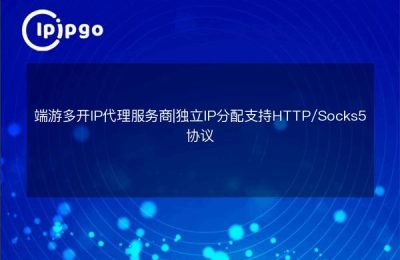
When we need to use HTTP proxy in our browser, we can follow the steps below to configure it. Like an invisible tour guide, the HTTP proxy can help you find information and open web pages as you surf the web.
1. Find your browser settings
First, we need to find the Settings option of the browser. This option is usually located at the top of the browser's menu bar and it looks like a gear or a three-dot icon. Click on this icon and select the "Settings" option.
2. Finding web proxy options
On the settings page of your browser, we need to find the option for Web Proxy. This option may be named "Network Settings", "Proxy Settings" or something similar. You can easily find it by scrolling or searching.
3. Configuring the HTTP proxy
Once you have found the web proxy options, the next step is to configure the HTTP proxy. There are usually two types of proxies: manual and automatic. Manual proxies require you to provide the IP address and port number of the proxy server, while automatic proxies will automatically get their configuration from a file or URL.
4. Enter the IP address and port number of the proxy server
If you chose a manual proxy, you will need to enter the IP address and port number of the proxy server. This information is usually provided by your network administrator. Enter this information into the corresponding text boxes and make sure they are correct.
5. Save settings and enable agents
Remember to save these settings after completing the HTTP proxy configuration. Some browsers require you to restart your browser for the proxy to take effect, while others will automatically apply the new settings. Make sure you have enabled the proxy and check to see if you are able to access the Internet properly.
Benefits of using an HTTP proxy
Configuring your browser's HTTP proxy can do us a lot of good. Like a silent friend, it silently supports our web browsing.
1. Improving network speed
By using an HTTP proxy, we can send web requests to a proxy server. These servers are usually located relatively close to the content we need, thus increasing the speed of the network. Like a fast mailman, HTTP proxies can deliver the information we want faster.
2. Enhancing privacy protection
HTTP proxies can also help us enhance our online privacy. When we use a proxy server, our real IP address and location information is hidden, making us more anonymous. Like a master of disguise, HTTP proxies can protect our identity.
3. Bypassing geographical constraints
Some websites or services may restrict access based on our geographic location. By using an HTTP proxy, we can bypass these geographic restrictions by choosing to connect to a proxy server located in another region. Like a traveler, HTTP proxies can lead us across virtual borders.
wrap-up
With simple steps, we can easily set up an HTTP proxy in our browser. Whether it's to increase network speed, enhance privacy protection or bypass geo-restrictions, HTTP proxy can help us better enjoy the online world. Hope this article is helpful to you and may you enjoy a pleasant online experience!








